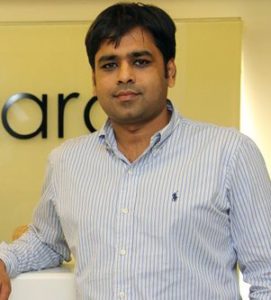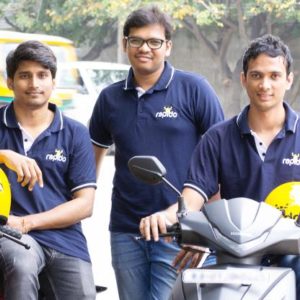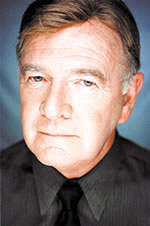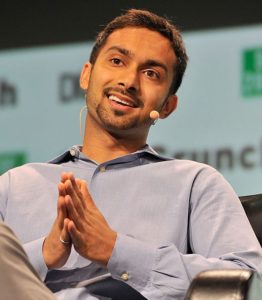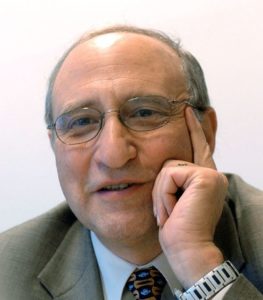Michael Aldrich : A Connoisseur in the Entrepreneurial World and the Founder of Online Shopping
In the biggest success stories of start-ups of that, we hear from around the world today would have not come into existence today, if online shopping did not exist. From the prospering online shopping sites, like eBay, Amazon, Flipkart, to the very small newly started e-commerce sites should be grateful of the English entrepreneur who came up with the idea of online transactions. That great innovator is none other than Michael Aldrich, who developed e-commerce from scratch in the late 1970s. With an experience of 28 years in the IT sector, he worked for reputed companies before inventing teleshopping (today known as online shopping).
Early Life
Born into a family living in Hertfordshire, England, on 22nd August 1941, Aldrich did his schooling from Clapham College, London. He was a very bright student and even received a scholarship to study history at the University of Hull in 1959. During his time there, he met Sandy Kay Hutchings and got married to her just before completing his graduation. So, Aldrich already established a family before starting his career.
Many say that getting committed and entering into married life at a very young age can create difficulties and stops you from giving your best. But, in this case, it’s diametrically opposite.
Beginning of Aldrich’s Career
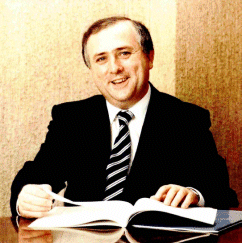
Aldrich worked for Honeywell and Burroughs in the sales and marketing department of the company for almost 15 years. After that, he joined Redifon Computers, which was a part of the UK Rediffusion Group of Companies. The Rediffusion Group manufactured televisions as well as computers, but Aldrich worked for the department of computer manufacturing.
This is when the journey of the invention of online shopping (he named it teleshopping) began.
The Story
One day in the year of 1979, UK Rediffusion Group sent a colour television to Aldrich’s office, but he didn’t pay much attention to it, as his main concern revolved around selling computers. This television came with a new service called Prestel, a paid commercial service that would be delivered through a telephone line.
Seeing no interest of Aldrich in that television one of the engineers in his company, Peter Champion, decided to learn more about this new TV, and its new feature. After studying about the TV for a few weeks, he told Aldrich that the television came with an auto-dialer that could hold four telephone numbers. He gave Aldrich the idea of building such a controller for a computer, and then, connecting the television. Aldrich noticed his point, but he didn’t give it much of thought at that time.
After a few days, when Aldrich was complaining about the weekly tour to grocery shops, the idea of Peter hit him hard. This was when he thought of connecting the television to the supermarket itself and get the groceries delivered to home. Without wasting a single second, Aldrich started working on this idea.
After days of research and writing papers, finally, a prototype TV to test this real-time transaction process was connected to one of their computers, and the test was successful. There wasn’t any year of research going on to support this idea of teleshopping, and hence, it seemed like a sudden scientific mutation took place in the communication world.
Once it was developed, Aldrich needed to set up a market and build up demand as the entire world wasn’t aware of how to use this new system.
After Reality Hit Hard
Aldrich found himself in a total mess, as he invented a product, but there wasn’t a market to sell it. So, after the invention, he tried reaching out to people for real feedback and everything was done in sheer privacy as their product wasn’t officially launched.
He went to a conference in New Orleans, kept it low and received positive feedback from the people. Returning back to the UK, the company designed the multi-port controller, built the computer interface software, and finally, launched it on April 1980. The entire world was amused by the idea of shopping from home, but no one was actually able to interpret how it worked. So, Aldrich hosted a press conference, and again, launched the product in July 1980.
Marketing Strategy
After launching the product, the idea was very clear to Aldrich that he would sell this to big corporations so that he could connect the agents, customers and distributors directly to the system without the involvement of a third party. He divided the market into leaders and followers and approached the leaders with this product. This business idea was later known as business to business online shopping (B2B).
The company had almost no competition, so it flourished for the next ten years after its launch.
After the great invention
In 1984 Aldrich became a fellow of the British Computer Society, and a Chartered Fellow in 2004. He was also awarded an honorary degree of Doctorate of Letters by the University of Brighton in 2004. In 1987 he was made a Freeman of the City of London, England. Aldrich became the Chairman of Tavistock Institute of Human Relations in 1989. In 2010, University of Brighton named an award after his name, which is given to the talented students excelling in e-commerce.
Aldrich died on 19th May 2014.

Annasha Dey is an NIT student, who apart from studying engineering is also a content writer. She has a great interest in photography, writing, reading novels, and travelling as well. She is a foodie who loves socializing and hanging out with her friends. She is also a trained Kathak dancer and a big fashion enthusiast. Dey also loves watching TV series, which includes F.R.I.E.N.D.S. and Big Bang Theory. To be a better writer she prefers to read more

